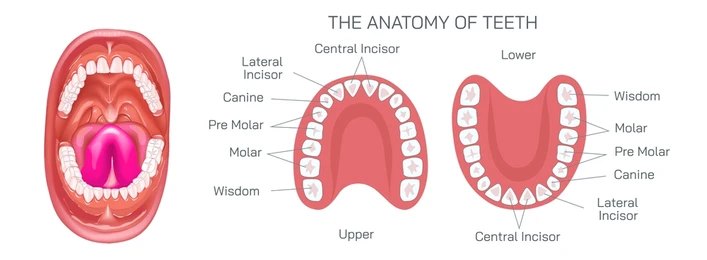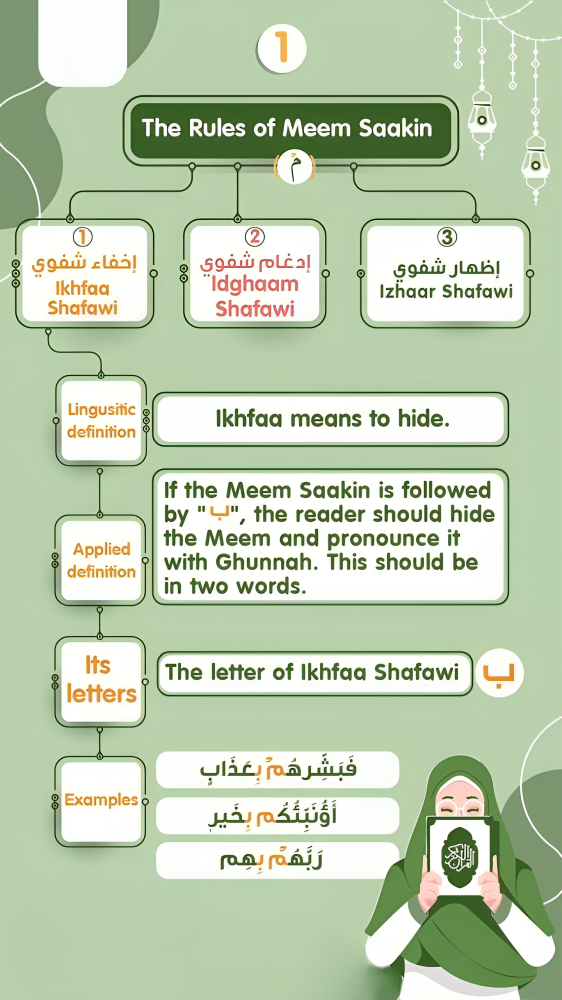The Significance of Understanding Teeth and Tongue in Quranic Pronunciation
Mastering Quranic recitation (Tajweed) requires more than just knowing the words. Understanding the articulation points (Makhaarij) of letters plays a pivotal role in delivering the exact pronunciation, preserving the Quran’s integrity. To achieve this, learning about the structure of the teeth and tongue is crucial.
Teeth in Arabic Pronunciation
Before delving into the articulation of Arabic letters, it is necessary to know the names of the teeth in Arabic and their roles in proper pronunciation.
| No. | Arabic Name | Pronunciation (English) | Top | Bottom | Total |
| 1 | ثنايا | Sanaaya (Central Incisor) | 2 | 2 | 4 |
| 2 | رباعيات | Rabaaiyaat (Lateral Incisor) | 2 | 2 | 4 |
| 3 | أنياب | Anyaab (Canine Cuspid) | 2 | 2 | 4 |
| 4 | ضواحك | Zawaahik (First Pre-Molar, First Bicuspid) | 2 | 2 | 4 |
| 5 | طواحن | Tawaahin (Second Pre-Molar, First & Second Molar) | 6 | 6 | 12 |
| 6 | نواجذ | Nawaajiz (Third Molar, Wisdom Tooth) | 2 | 2 | 4 |
Understanding the Tongue in Arabic Articulation
The tongue is one of the most crucial organs in Arabic articulation. The position of the tongue helps in differentiating the various sounds in the Arabic language. The tongue is divided into specific sections that correspond to different Arabic letters:
1. Tip of the Tongue: This part is responsible for producing sounds like “Laam” (ل) and “Nun” (ن). The tip plays a crucial role in the pronunciation of many Arabic letters.
2. Middle of the Tongue: Letters like “Jeem” (ج), “Sheen” (ش), and “Ya” (ي) are articulated from this part of the tongue. This region provides the central sounds of the Arabic language.
3. Back of the Tongue: The sounds of heavy letters like “Qaaf” (ق) and “Kaaf” (ك) are produced here. The correct elevation and placement of the tongue towards the soft palate are necessary to give these letters their distinct sound.
4. Sides of the Tongue (Hafah): This part is crucial for letters like “Daad” (ض), which is unique to the Arabic language and often challenging for non-native speakers.
By understanding the tongue’s role in articulation, one can improve their Quranic recitation, ensuring that every letter is pronounced with precision. This precision is vital in Tajweed, as it preserves the true meaning and beauty of the Quran.
Conclusion
Mastering Istiaazah and Basmalah, along with the correct articulation of Quranic letters through knowledge of the teeth and tongue, forms the foundation of effective Quranic recitation. As we delve deeper into the beauty of the Quran, it becomes apparent that attention to detail—whether it’s seeking refuge in Allah or perfecting our pronunciation—enhances the spiritual and practical aspects of our worship.





